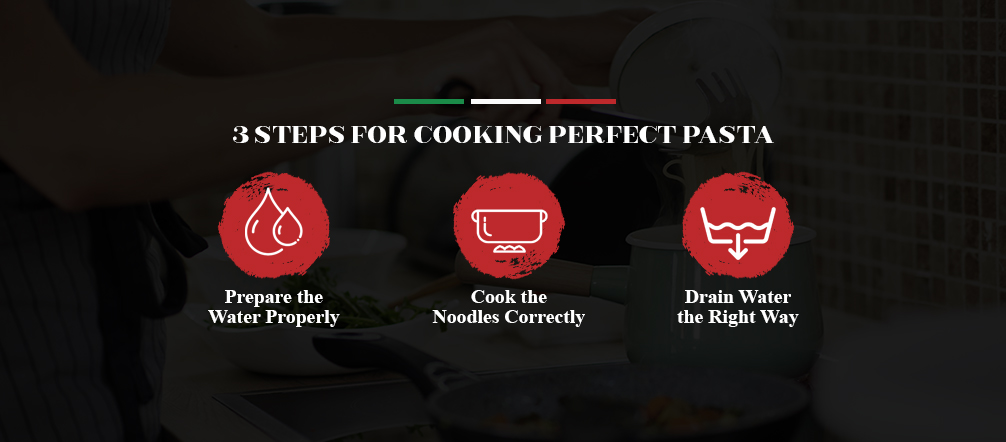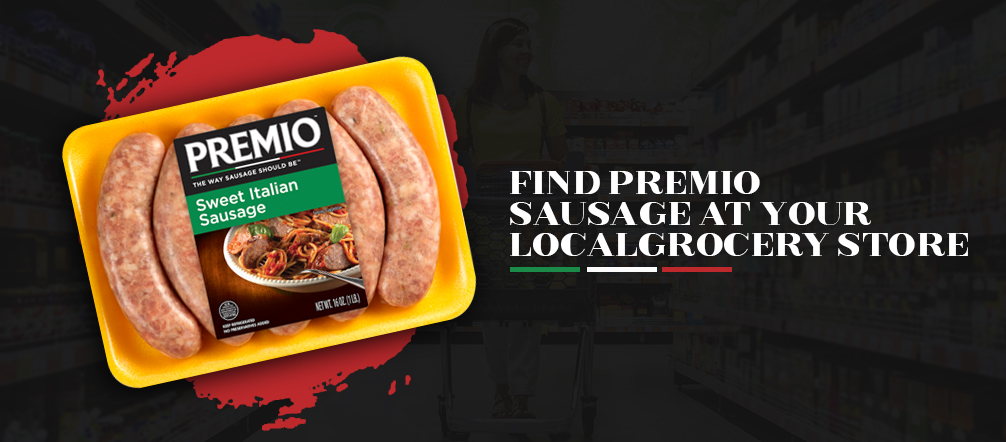Tips for Cooking With Pasta
Ever wonder why something as simple as cooking pasta can seem so difficult? The secret is the pasta tips and tricks the standard box instructions don’t disclose. So don’t distress — although that beautiful al dente noodle may feel impossible to achieve, pasta perfection is attainable!
There are lots of pasta cooking myths, so we decided it’s time to get to the bottom of them and determine the perfect way to cook pasta once and for all. Keep reading to learn how to make pasta, tips for cooking spaghetti and other pasta and some extra pasta tips and tricks to create a dish that will taste straight from Italy itself.
3 Steps for Cooking Perfect Pasta
The first thing you have to know before learning any other pasta pro tips is to always cook your pasta last. Prepare your sauce before getting started on your pasta, so you can immediately transfer the noodles into the sauce instead of serving them separately. Combining your pasta with the sauce will keep the noodles from sticking together.
Once you’ve finished your sauce and are ready to start making your noodles, here are our three most helpful tips for before, during and after the pasta cooking process.

1. Prepare the Water Properly
To start, use a big enough pot for the amount of pasta you plan to make and fill it with plenty of water. During the cooking process, the starches from the pasta can thicken the water and make the noodles slimy if there’s not enough water for the starch to spread throughout. To avoid gummy pasta, use four quarts of water for each pound of pasta you’re putting in the pot.
After filling the pot with water, shower it with salt. Salting the water it the only chance you have to directly season the noodles themselves, instead of covering them in the flavors of a sauce, so make the most of the opportunity. One tablespoon of salt per pound of pasta does the trick.
Once you’ve salted the water, you might feel tempted to pour some olive oil in, too. Don’t! Contrary to popular belief, adding oil to the water isn’t that effective for preventing the noodles from sticking together. Instead, the slick oil coats the pasta and makes the sauce slip right off its surface.
Now that you’ve completed all these steps, it’s finally time to start boiling the water.
2. Cook the Noodles Correctly
It may seem self-evident, but don’t add the noodles until the water has reached a definitive boil. Yes, it can be hard to wait when you’re anticipating pasta goodness, but putting noodles in water before it reaches a boil will result in a mushy meal. Plus, it will take longer for your pasta to cook through in non-boiling water than if you’d waited for the water to boil in the first place.
When the water does finally boil and it’s time to add the pasta, don’t break longer pieces of spaghetti or linguine. Instead, place the pasta in the pot as-is and push it into the water with a spoon until you have it fully submerged — this is another time when using a large enough pot will come in handy. Stirring your pasta with a spoon as soon as it enters the water, and periodically throughout the cooking process, will keep it from clumping.
Everyone wants to pull off the perfect al dente pasta, but it can be all too easy to over- or undercook your noodles. Ideally, you want to make your pasta tender, but strong enough to stand up to the sauce’s weight without turning to mush.
But there’s one straightforward way to make sure you nail your pasta’s texture — taste test! The cooking instructions on the pasta box aren’t always accurate, so sample a noodle before deciding whether your pasta’s ready to serve. Besides, taste testing is how all the pros cook pasta.
3. Drain Water the Right Way
Once you’ve tasted your pasta and decided it’s to your liking, get ready to drain the hot water from the pot. Before pouring out all your pasta water, set some of it to the side in a separate cup to save for the sauce. Adding a bit of starchy pasta water to your sauce will make it stick to your noodles better.
Because starch helps the sauce cling to your noodles, you shouldn’t rinse your pasta after draining the water. Rinsing the noodles will wash all the starch off, which you only want if you’re using your noodles to make a stir-fry or quick pasta. Don’t let drained pasta sit for too long, or the starches will harden and cause the noodles to clump together. Instead, add your pasta to your pre-prepared sauce as soon as it has finished cooking.
How to Pair Your Pasta With Sauce
It’d be a shame to waste your perfectly cooked pasta on the wrong sauce. To save you from a mealtime fiasco, we’ve put together a quick guide of pasta and sauce pairings that will make choosing the pasta shape that best complements your sauce a snap.
Keep this cheat sheet in mind for the next time you’re unsure what sauce to put on your pasta.
- Fusilli: A corkscrew-shaped pasta like fusilli always goes well with chunky sauces containing veggie or meat pieces, because the fusilli’s spiral catches all the yummy goodness. This Buffalo chicken sausage pasta salad recipe begs to have you pair it with an al dente fusilli.
- Spaghetti: Now that you know how to cook spaghetti noodles to perfection, you can pair them with a classic, meaty sauce. Specifically, spaghetti bolognese is the ultimate Italian comfort food.
- Penne: The tubular nature of penne makes it an excellent pasta shape for spotlighting show-stopping sauces. Penne typically takes on a supporting role to keep its sauce center stage, as it does in this spinach and artichoke penne with sausage recipe.
- Farfalle: Farfalle, with its cute little bow-tie shape, is ideal for anchoring heavy sauces and pasta salads. Primavera is a classic farfalle dish — we especially like this sausage and pepper primavera recipe.

